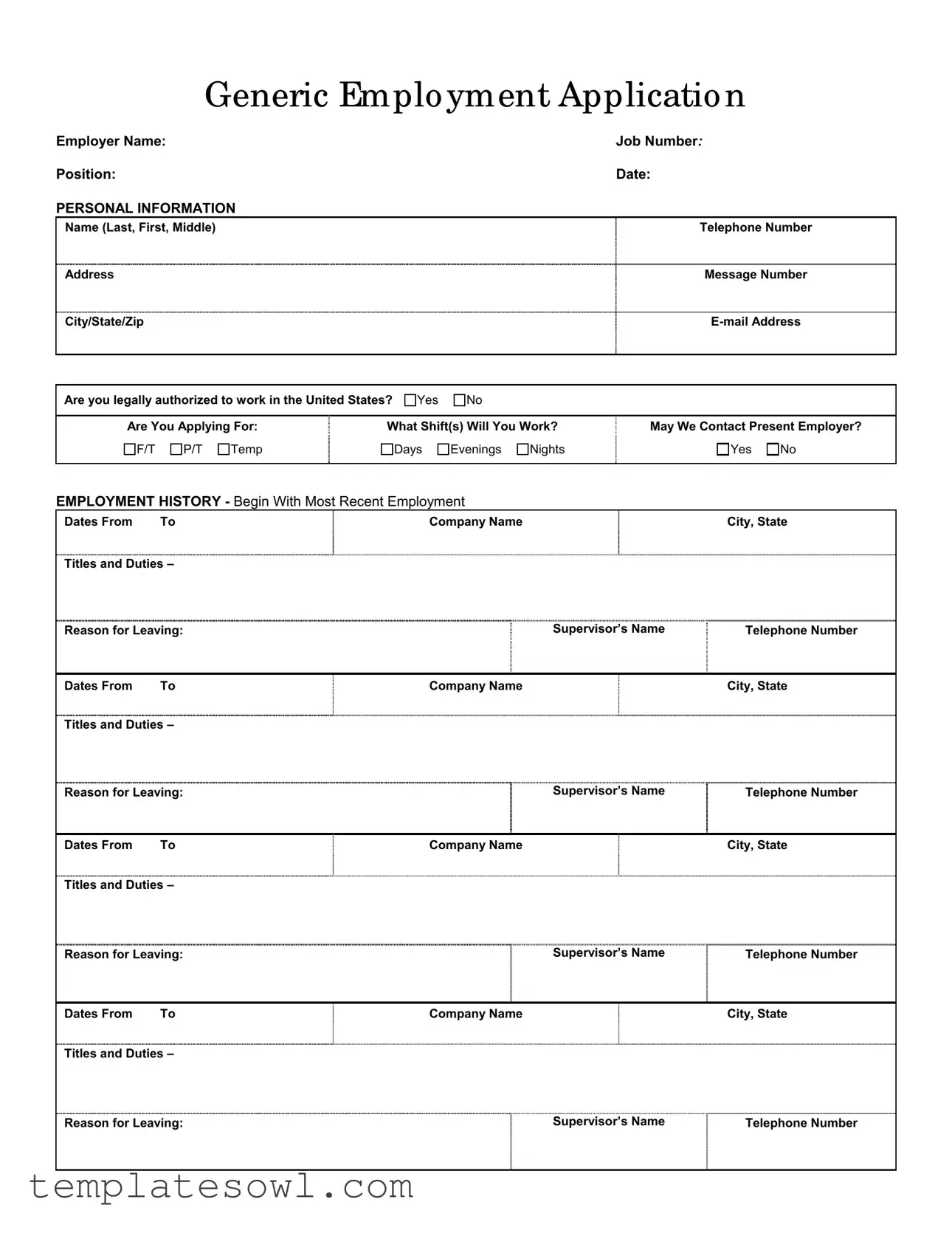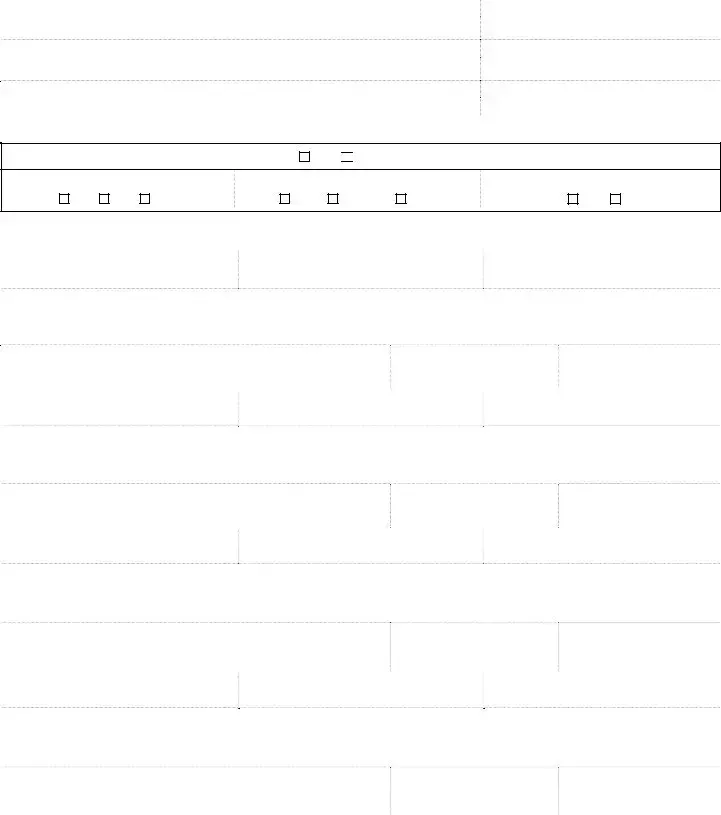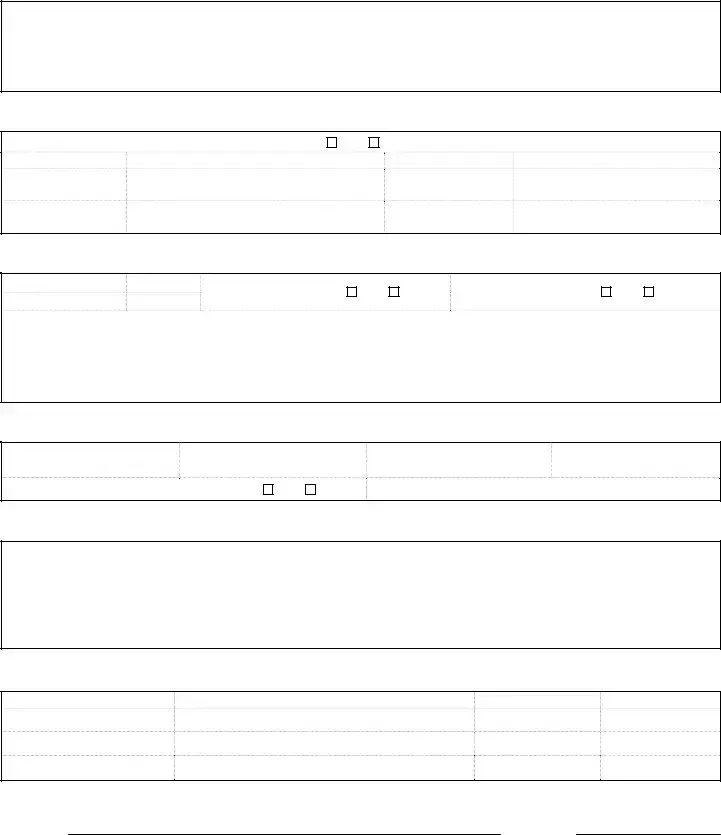What is the purpose of the Generic Application form?
The Generic Application form serves as a standardized method for applicants to express their interest in available positions. It collects essential personal, employment, and educational information that employers need to assess a candidate's qualifications and suitability for the job.
What information is required on the form?
Applicants must provide their personal details, including their name, address, phone number, and email. Employment history should list previous jobs, duties, and reasons for leaving. Education is also important, with a focus on high school or GED completion, along with any higher education or specialized training. Additional sections may include military service, clerical skills, professional licenses, other special skills, and references.
Can I apply for multiple positions at once?
What should I do if I have gaps in my employment history?
It is important to be honest about employment gaps. If you have gaps in your work history, you should briefly explain them in the space provided or during an interview. Many employers appreciate transparency and are more understanding of varying career paths.
Are references mandatory?
While the form requests references, they are not strictly mandatory. However, providing references can enhance your application and give potential employers additional insight into your skills and character. If references are unavailable at the time of submission, consider noting that they can be provided upon request.
How should I list my previous jobs?
List your previous jobs in reverse chronological order, starting with the most recent position. Include the company name, title, dates of employment, responsibilities, and any noteworthy achievements. Clarity and completeness will help employers better evaluate your experience.
What if I am not currently authorized to work in the U.S.?
If you are not legally authorized to work in the United States, you should select “No” in the section asking for work authorization. Applicants are typically required to be authorized before employment begins, so this is a critical component of the application process.
How important is the accuracy of the information provided?
Providing accurate information is crucial. False or misleading details can lead to disqualification from consideration or, in some instances, termination if discrepancies are discovered after hiring. Ensure that all statements reflect your true qualifications and experiences.
What is the significance of signing the application?
By signing the application, you confirm that the information provided is true to the best of your knowledge. This acknowledgment serves as a binding agreement that an employer can rely on the accuracy of your application. It also implies understanding that any false statements may have serious consequences.



 No
No